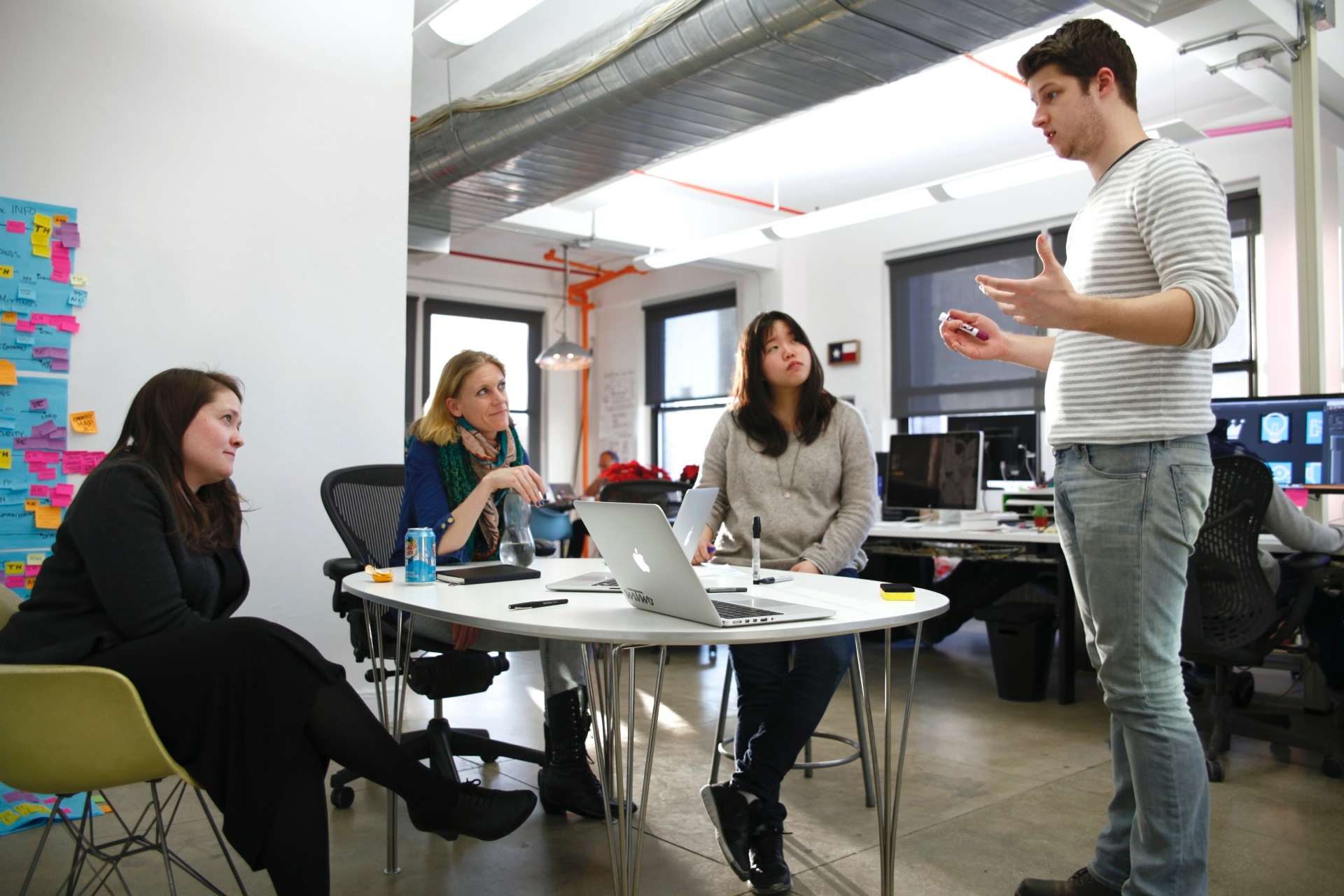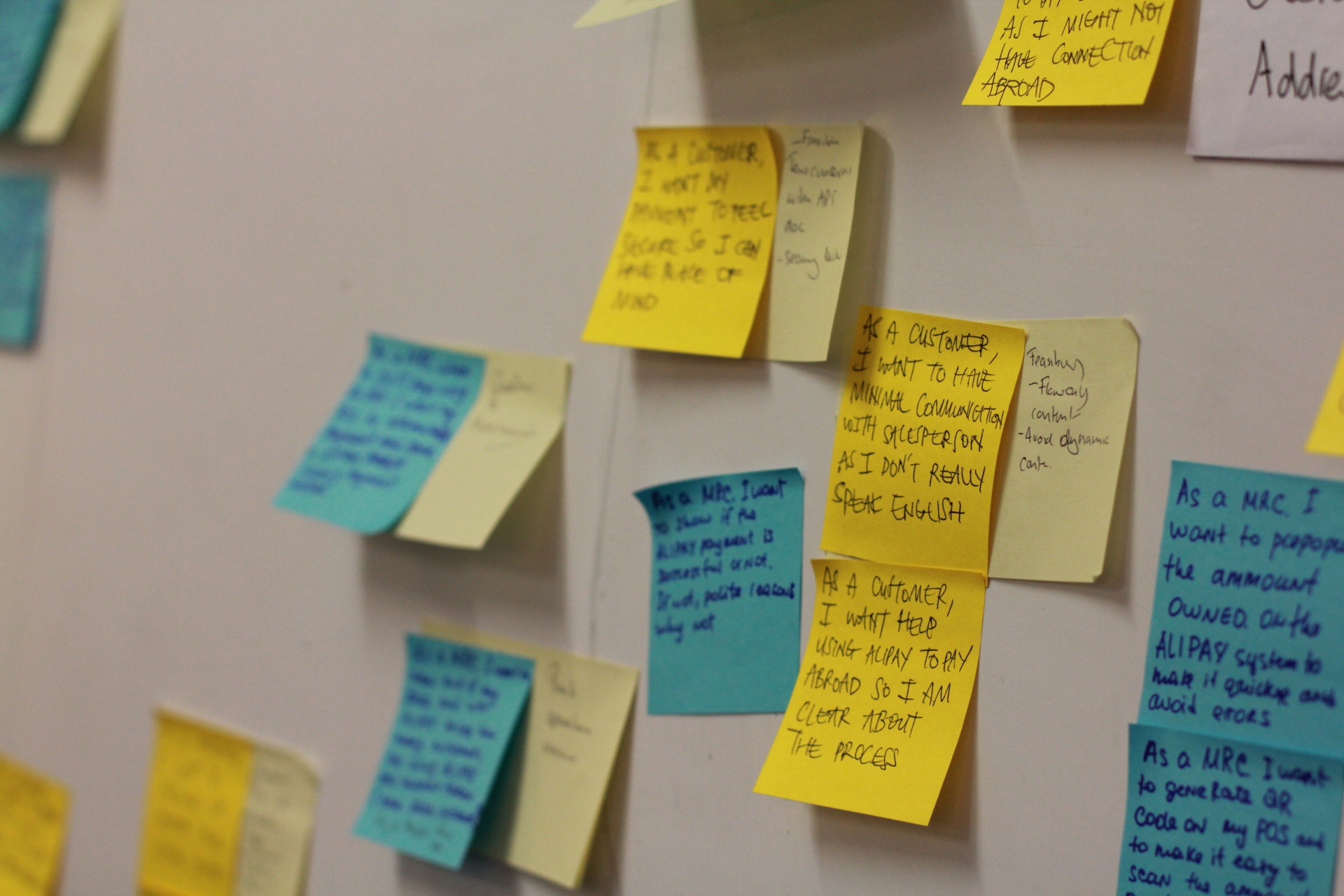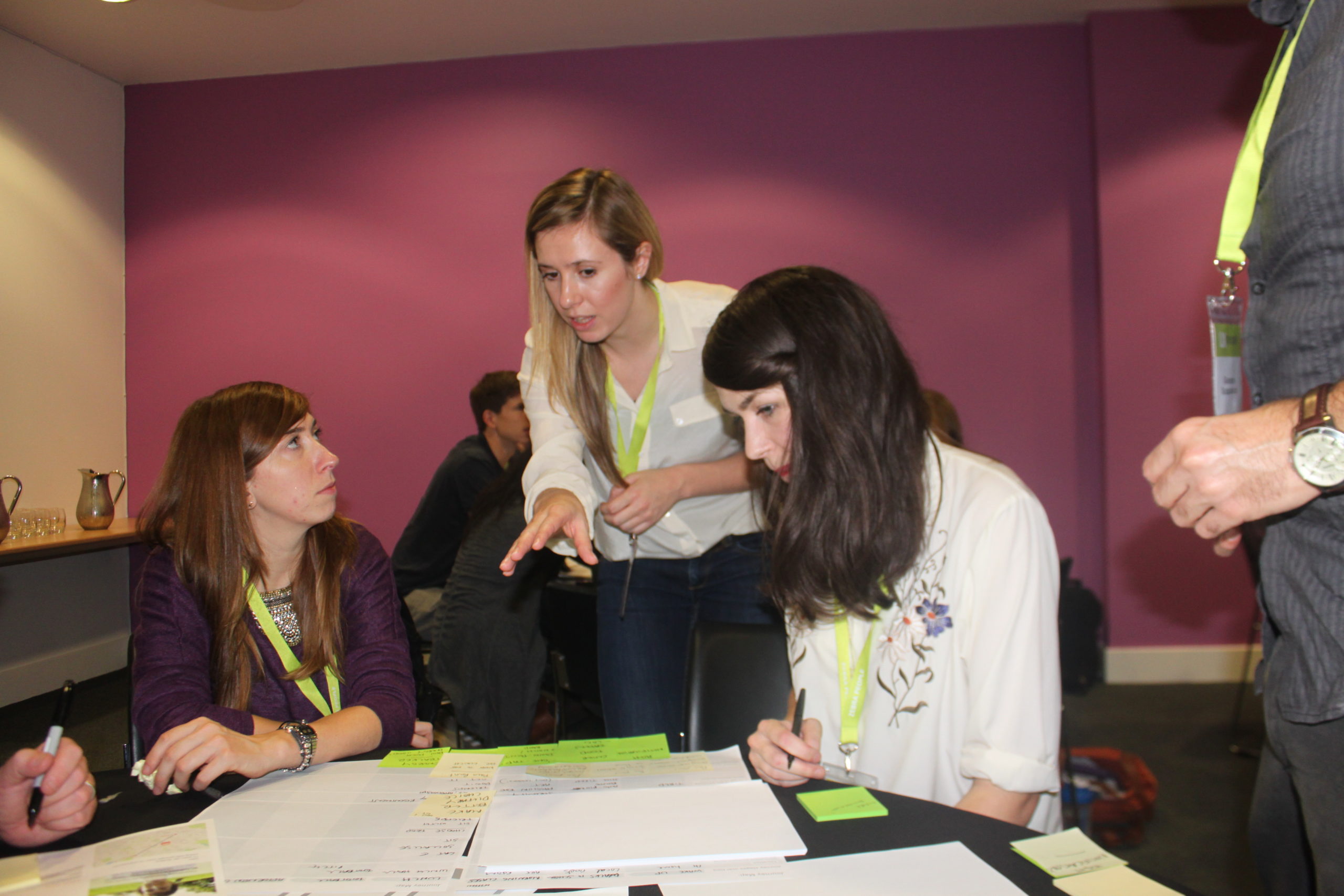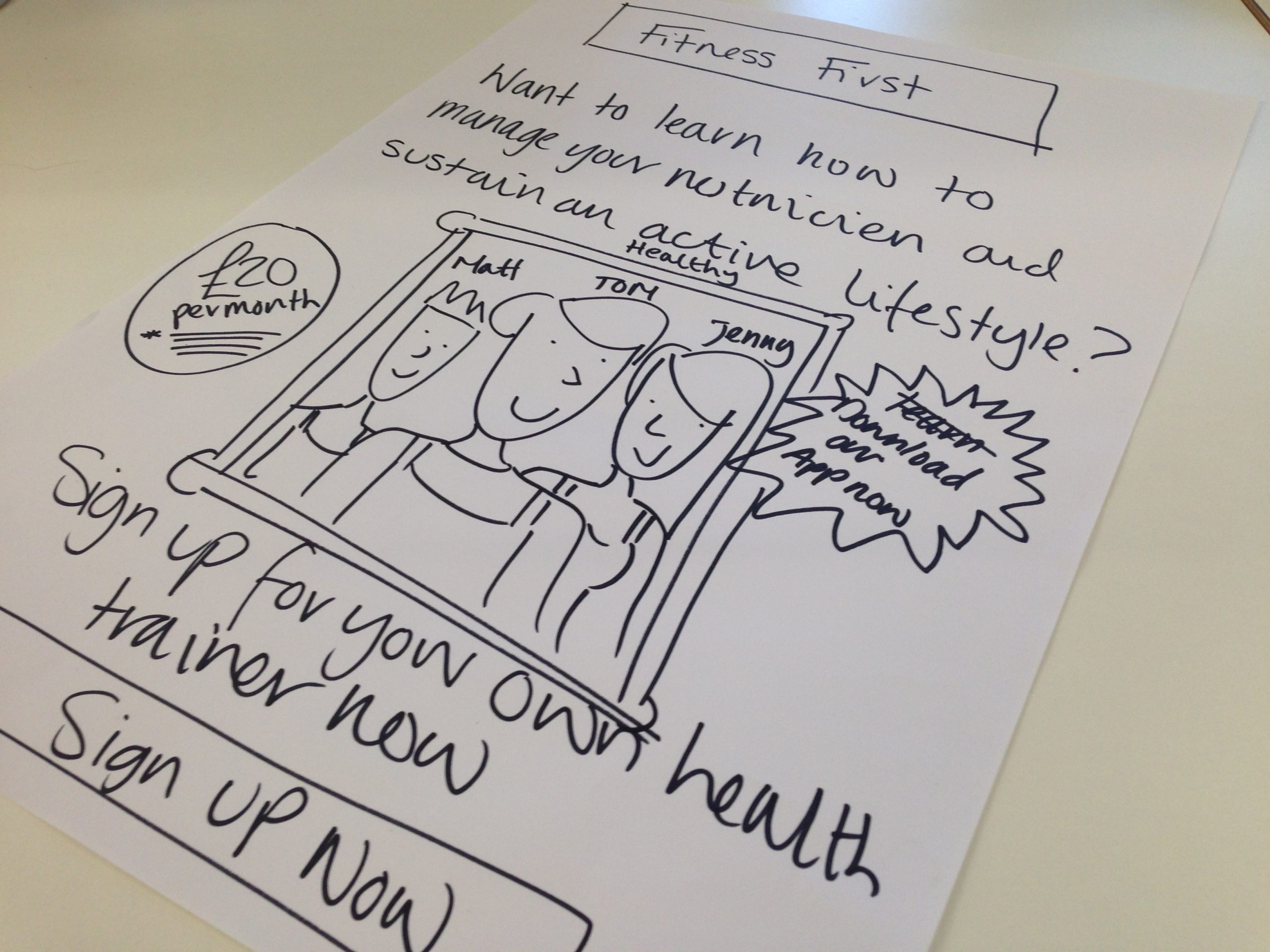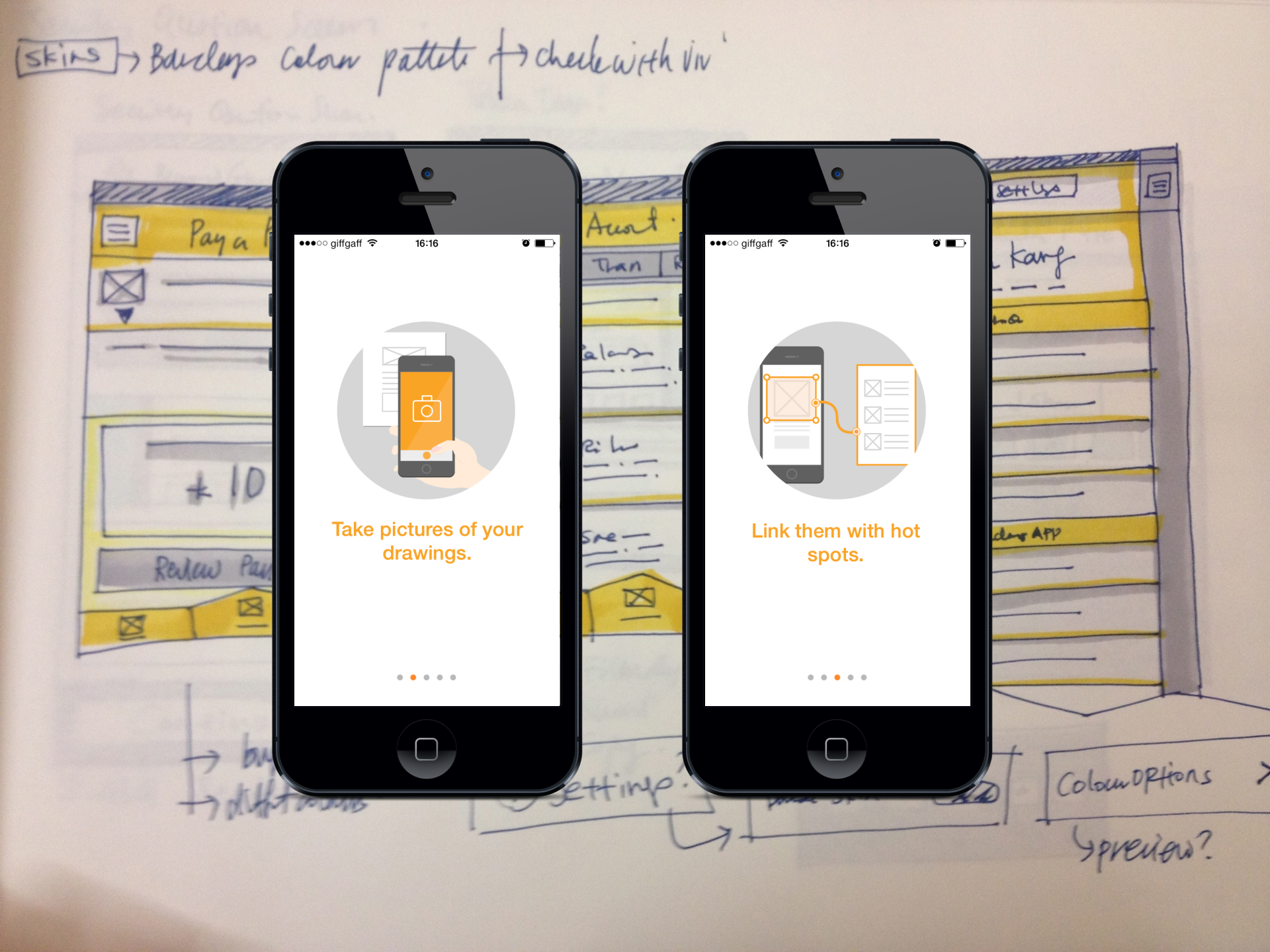Agile UX Bootcamp
A hands-on workshop to learn the Agile process, from product concept to validation
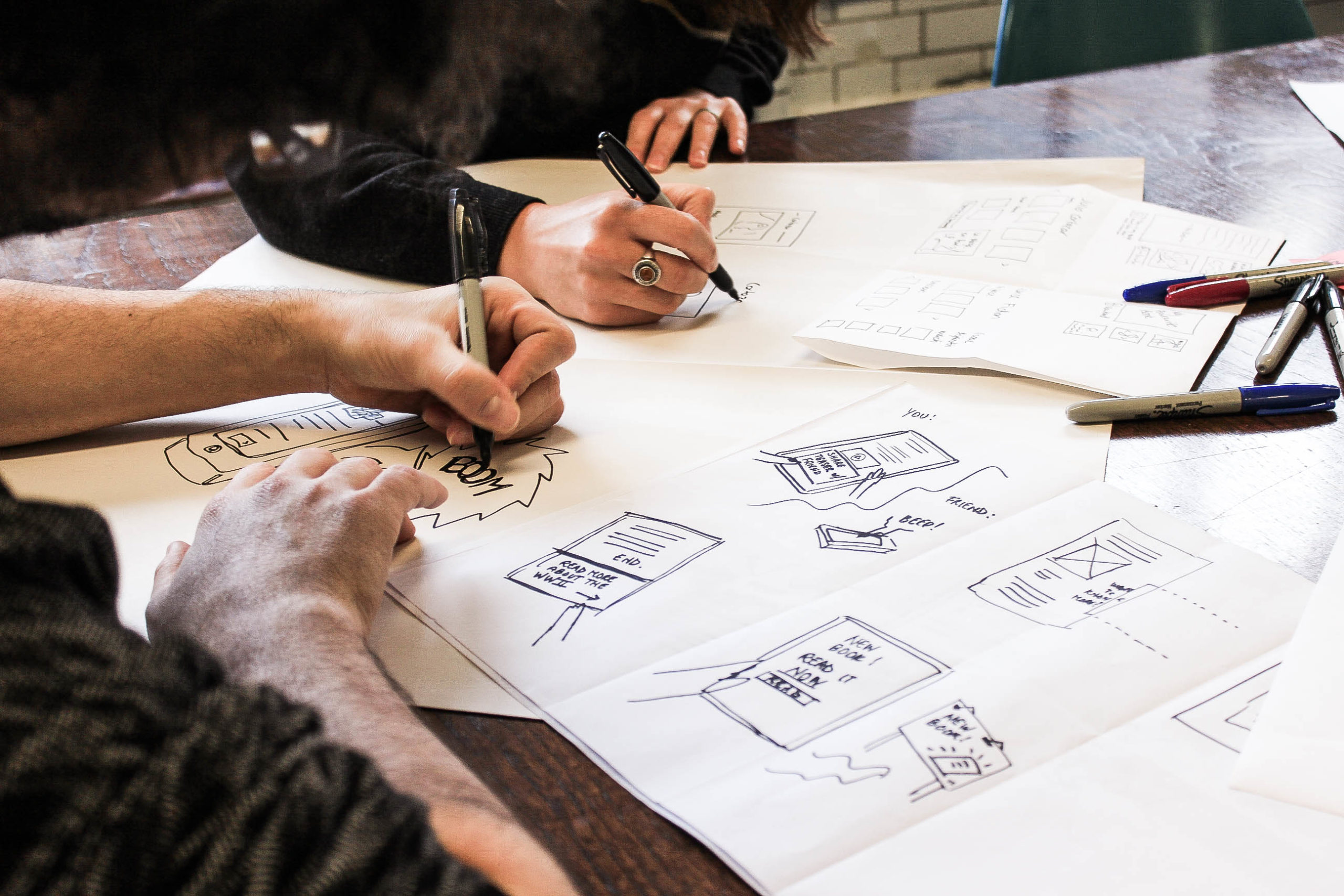
Type: Workshop
Participants: clients and external
During my time at ustwo I've had the chance to design and facilitate a series of Agile UX workshops, addressed to clients of the studio or even external participants, ranging from design schools to other companies' employees. I usually paired up with a colleague of mine to help run the sessions and provide assistance to all participants. It was an exciting opportunity for me to connect emphatically with other people and test myself in a "teaching" role.
These workshops would usually last one single day, held at our headquarter studio or sometimes run in other places. The workshop would allow participants to learn the basics of the Agile design methodology, understand the team dynamics and test their rapid thinking and prototyping skills.
Step 1: Vision
In the morning, participants would be given first of all a background introduction to the Lean manufacturing process, leading to an explaination of the Agile software development. Then they would soon get their hands on the first activities: based on a provided brief and personas, the participant would start declaring assumptions (both on the user's and business' sides).
They would then prioritise the assumptions and pick the unknown/high-risk ones to be turned into hypothesis to be validated.
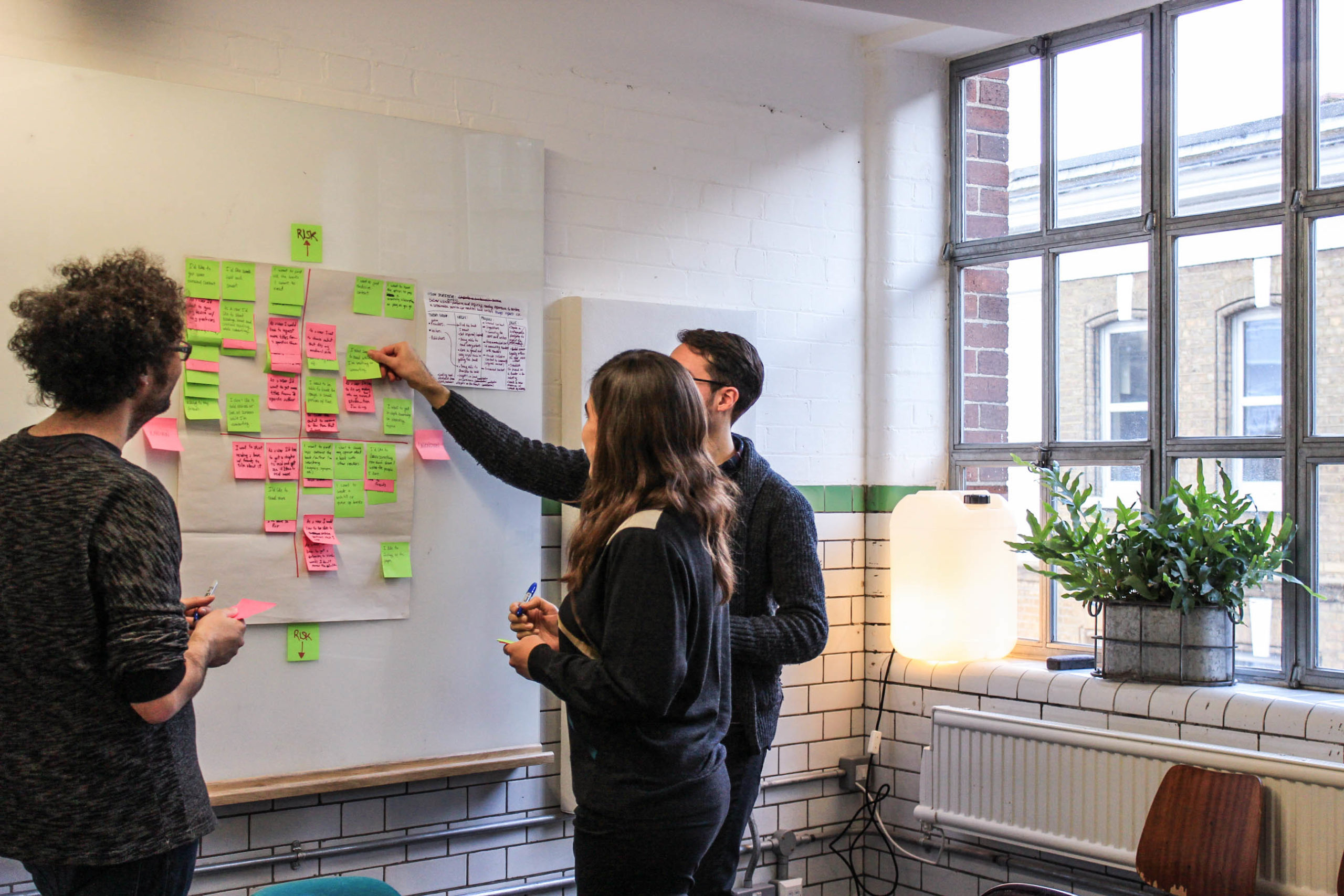
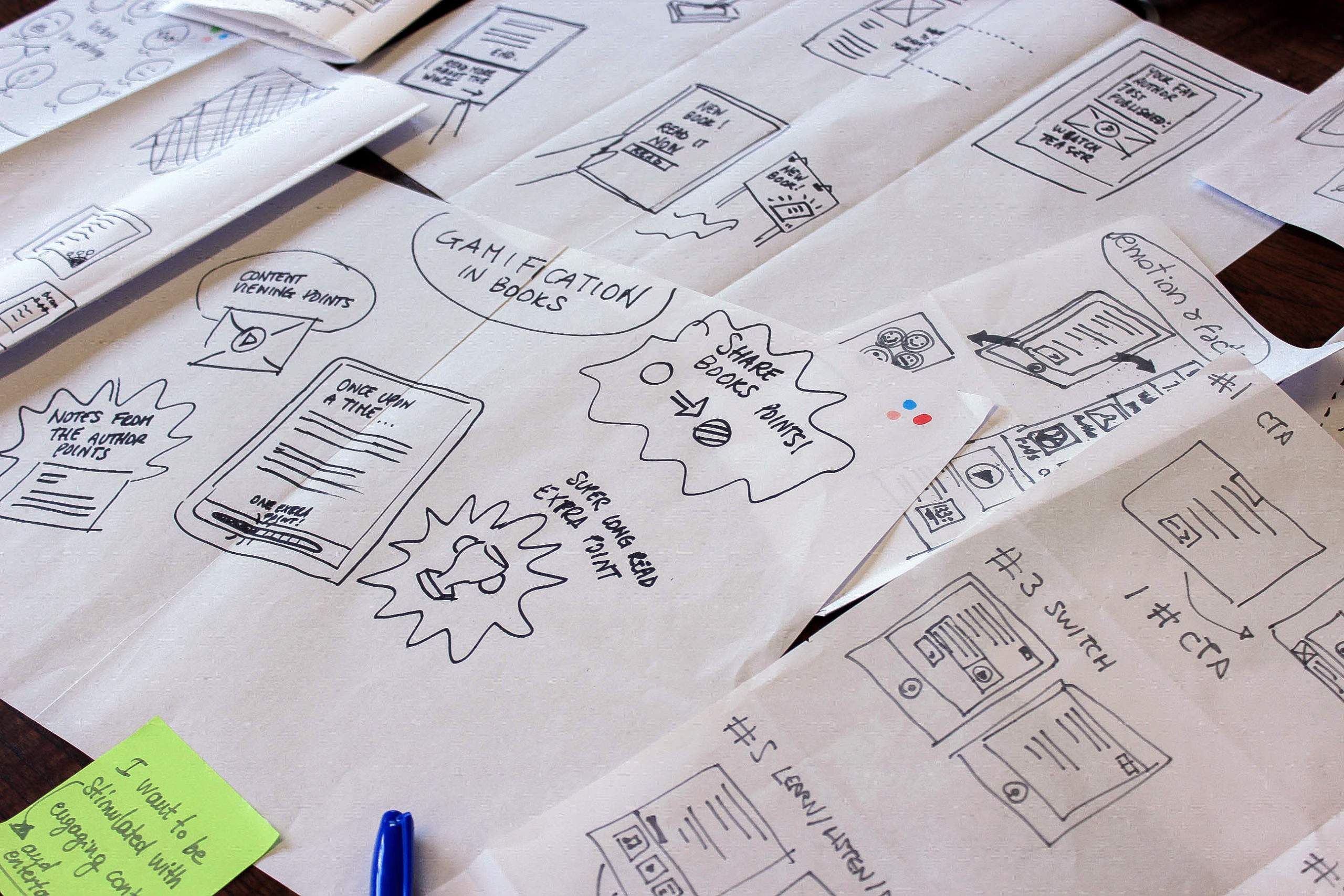
Step 2: Learn testing techniques
Based on the defined hypothesis statement, participant would then quickly sketch a landing page on paper, to be tested with other participants in the room through interview.
The feedback received would be shared in the group, and among the negative feedback they would generate ideas for improvement. Based on this they would learn what it means to "pivot": the initial assumptions board would now be updated with the learnings and a new hypothesis would be declared.
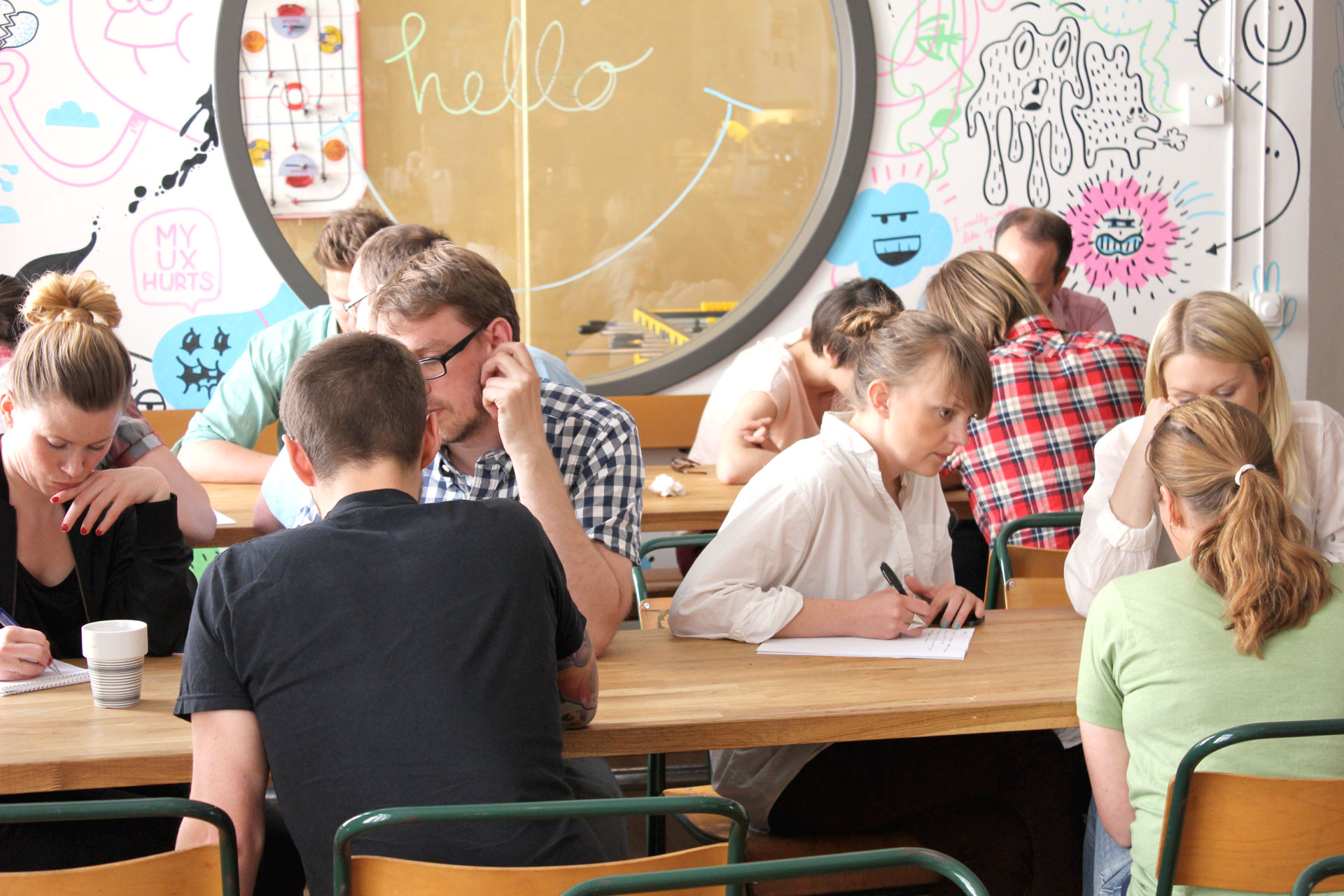
Interviews were conducted with members from other groups and aimed at gathering both positive and negative feedback about the proposition.
Step 3: Learn rapid prototyping techniques
After a lunch break, the workshop would continue in the afternoon with a second round of testing, this time based on the new declared hypothesis. Participants would now design a prototype to be tested with users, by defining a basic task flow first.
Next they would sketch some key screens with pen and paper, and put a simple click-through prototype together with an app called Pop App. Now it was the time to test the prototype and share findings again with the group.
Step 4: Pitching
At the end of the day the final activity saw the participant put together a presentation of their process to be posted on the walls and presented to all participants in turns.
I got most satisfyed by seeing the participant's reactions at the end of the workshop. People who weren't used to this process, or people coming from other fields other than design, usually came out from these sessions excited about having learnt something new and felt empowered by seeing their ideas turn into something tangible in one day.
